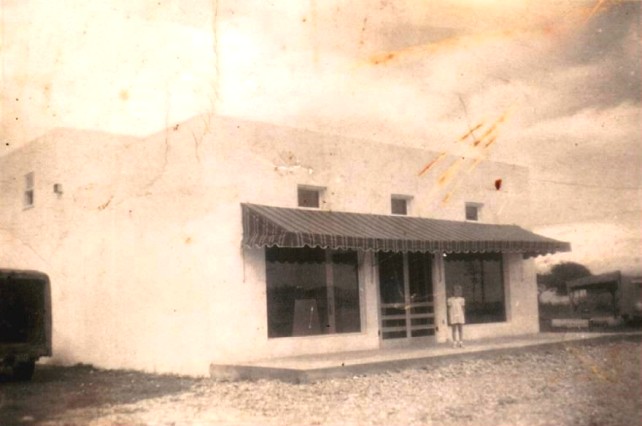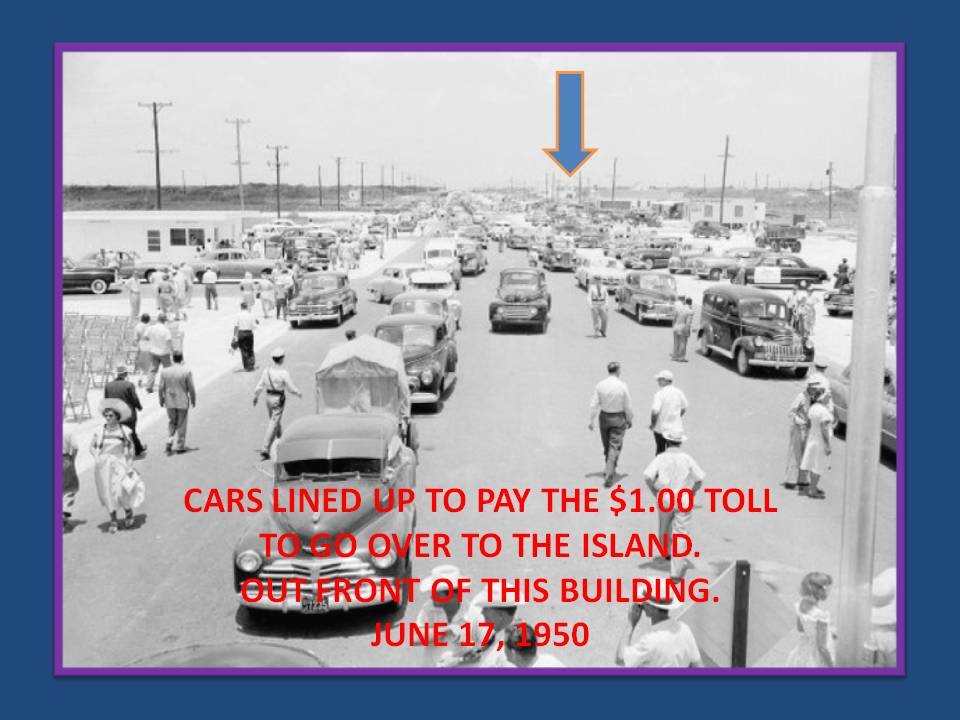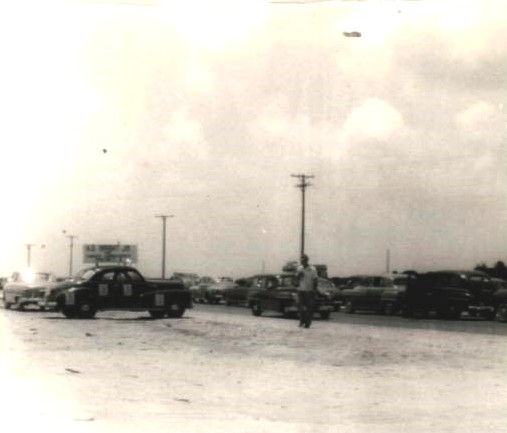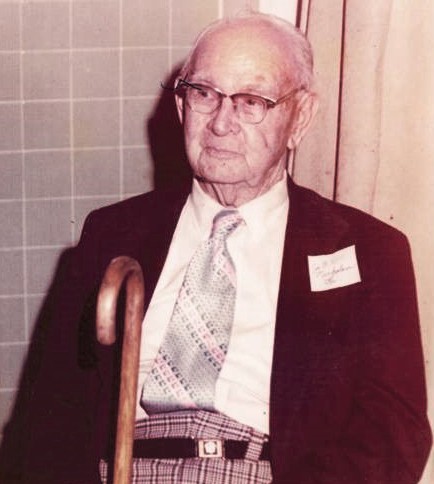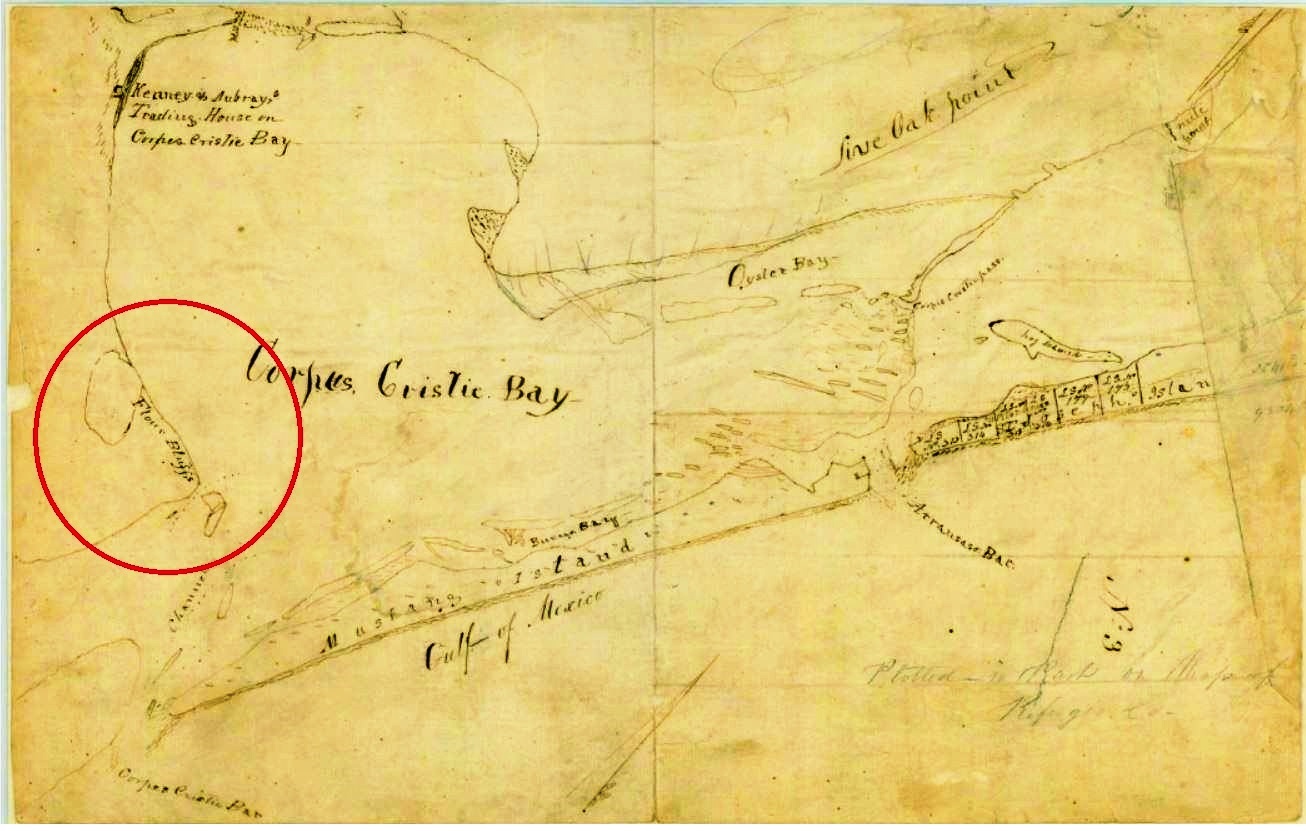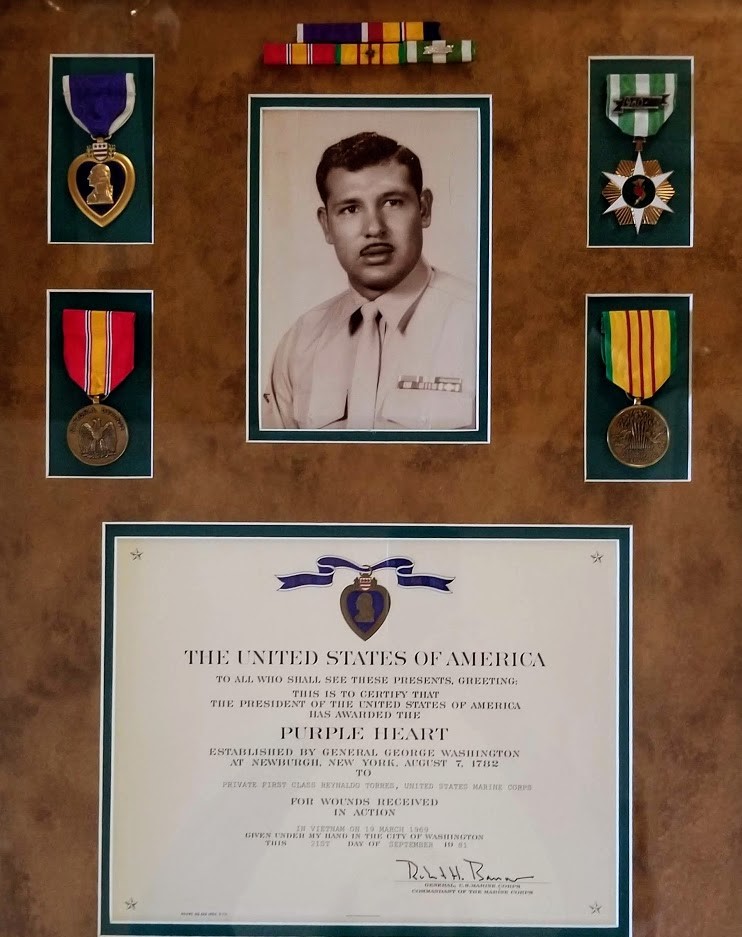To preserve the rich history of Flour Bluff, The Texas Shoreline News, will run historical pieces and personal accounts about the life and times of the people who have inhabited the Encinal Peninsula. Each edition will feature the stories gleaned from interviews held with people who remember what it was like to live and work in Flour Bluff in the old days. You won’t want to miss any of these amazing stories. This article first appeared in the Texas Shoreline News, August 3, 2018. To read more about Flour Bluff history, visit TSN.
Nicholson’s Grocery when it was first built, September 1948 (Photo courtesy of John Nicholson)
In 1947, when John Orval Nicholson, called “Daddy John” by many, got wind of a new causeway going in that would connect the Encinal Peninsula to Padre Island, he bought a piece of property on what was then a dirt road, a dirt road that would eventually become a major highway. A two-story house, built by a man from Kansas in the late 1930s, sat on the property and first carried the address of Route 4, Box 191, then 338 Davis Drive after 1950, followed by 338 Island Drive, and finally 10618 South Padre Island Drive. This address saw many changes along the way and is now the home to Barton Street Pub, which is owned by Nicholson’s grandson, John Orval Nicholson III.
Around the house were small cottages that made up what was called a “tourist court.” The house served as a home and as the office for the motel. According to John O. Nicholson III (Johno), the structures were substandard when his grandfather bought them. “He remodeled all of it built units 1 and 2, which are now my workshop, and 10 and 11, which are now rentals. They’re on slabs,” said Johno. Daddy John sold that piece of the property in 1952, but his grandson bought it back in 1984.
Unbelievably, the Kansas man who built the original buildings also built a storm cellar behind the house, something quite peculiar for a Flour Bluff residence. “The underground part of it is still there,” said Johno. “The old man who owned the car wash bought that piece of the property, knocked the top off of it and just put dirt over it. I still hit something every time I mow because it’s still sticking up.”
“Daddy John lived in town, and the day he drove out here to look at the property, he got stuck in the sand,” his grandson said, chuckling. Still, he did not let that deter him. Daddy John knew that a causeway would bring lots of visitors with lots of money to spend, and he wanted to get ahead of the curve, so he built Nicholson’s Grocery in front of the two-story house in 1948, two years before the completion of the causeway. Several property owners along this rural route did the same because they, like Daddy John, could see that Flour Bluff would be the gateway to Padre Island.
The blue arrow indicates where Nicholson’s Grocery was located (Photo courtesy of John Nicholson)
“This whole strip was developing,” said Johno. “A&H Sporting Goods, Dairy Queen, Ed’s Sporting Goods, Buck’s Sporting Goods.” The Dairy Queen property, owned by the O’Donavitch family, sat on the west corner of Lakeside and Davis Drive. Their house was on the east corner. On the corner of what became Laguna Shores Road, Bernie Davis and her son Jim Coffman built A&H; it is now Wind and Wave. Buck’s became the Plaza Motel. Ed’s sat where the vacant lot and driveway into HEB are today. All businesses along the dirt road thrived once the road was paved and became the primary entrance to North Padre Island. Tourism became a major source of revenue for many of the people of Flour Bluff.
Island-bound cars in front of Nicholson’s Grocery wait in line to pay the $1.00 toll to cross over to the island, ca. 1955 (Photo courtesy of John Nicholson)
“My daddy had a radio shop in town. He was a radio technician before there was tv,” said Johno. “Daddy John enticed him to come out here after he married Mother and had my older sister, Sally. He wanted my dad to run the store because he wanted to go do something else. He built the store when he was 68. When he turned 72, he moved to Benton, Arkansas, and bought a small farm/ranch to give him something to do. My daddy took over the store.”
Daddy John returned to Flour Bluff two years later in 1954 and built a home behind the store. “He lived there, and Mama and Daddy continued to run the store,” recalls Johno. “Then, he decided to go back to Arkansas. He was 79.”
John Orval Nicholson, or Daddy John (Photo courtesy of John Nicholson)
This man, who did not seem to let age get in the way of what he wanted to do, bought a trailer in 1959 from Red Morrow, a man who lived on Laguna Shores. “Daddy John moved it next to the grocery store and started working on it,” said Johno, explaining that Morrow was building a house, which is why he sold the trailer to Daddy John.
“Red went to the Flour Bluff lumber company, which was called Selby-Lankford then, to order the lumber,” said Johno. (According to the Caller-Times, Selby-Lankford Lumber opened in 1951 on Lexington in Flour Bluff. Later, John Pearson bought the company and re-named it Flour Bluff Lumber Company.)
“The guys at the lumber company loaded the truck and headed out. He (Morrow) followed them to the house in his 1954 Mercury. A 2 X 12 came loose and went through the window and got him. It took his eye out. Of course, it knocked him out, and he veered off the road and hit a house. They took us to see the aftermath. It was very tragic, but he lived. He just lived with a glass eye after that.”
“Daddy John fixed the trailer up and had it hauled to Arkansas. He had bought 40 acres in Kirby,” recalls Johno, who was nine-years old at the time. “I went with him to follow the trailer up there. The property had nothing on it except a few old-growth pine trees. The next year, after school was out, I went up to visit, and he had a home built.”
“At that time, the forest service offered to populate your property with pine trees if you signed an agreement not to cut them down for 20 years,” Johno said. “He had 20,000 little pine trees planted in straight rows. My job for the summer was to mow between the pines. He kept the property for 9 years and lived there a month then down here a month. He drove with my grandmother, Daisy, sitting next to him. She didn’t like all of that, but he did. He told me, ‘I’ve got itchy feet.’ “
The man with “itchy feet” didn’t always live in Flour Bluff. “Daddy John was born in Indiana,” Johno said, “and he got his teaching certificate when he was 17. He taught first grade up through twelfth in a one-room school house. He said it didn’t pay very well, so he got a job as a mailman on a motorcycle.”
Daddy John’s first wife, Nettie Tompkins, got sick and died in 1921, leaving him with a son, John Orval Nicholson II. At that time, Oklahoma and New Mexico had just become states, so he loaded up his son and headed for Oklahoma. “He started building houses and churches to help get the state going,” said Johno. “He met and married Daisy in 1923 and moved on to New Mexico, where he started building homes and selling them,” Johno said. “People would buy a home and pay him on time. He was doing pretty well.”
Daisy, Daddy John’s second wife and the grandmother Johno knew, was born in Santa Anna, Texas, a town named for the twin mountains located just north of the community, which were in turn named for Santa Anna, a Comanche chief, according to the Texas State Historical Association. It was here that Daisy became a teacher. She moved from Santa Anna to New Mexico where she homesteaded some land. “She became fairly wealthy in terms of the time period,” said Johno. “She and Daddy John built a home in New Mexico. They were both pretty old by then.”
John Orval II moved to Texas City, Texas, to work for a refinery. “Somehow he ended up in Corpus Christi,” said Johno. “He had taken a correspondence course to learn how to work on radios, and Daddy John followed him. That’s how we wound up here.”
———————————————————————————————————————————–
Be sure to pick up the next edition of The Texas Shoreline News to read stories from other longtime residents of Flour Bluff. To share these stories about Flour Bluff history with others online, visit https://texasshorelinenews.com/.
The editor welcomes all corrections or additions to the stories to assist in creating a clearer picture of the past. Please contact the editor at Shirley@texasshorelinenews.com to submit a story about the early days of Flour Bluff.
